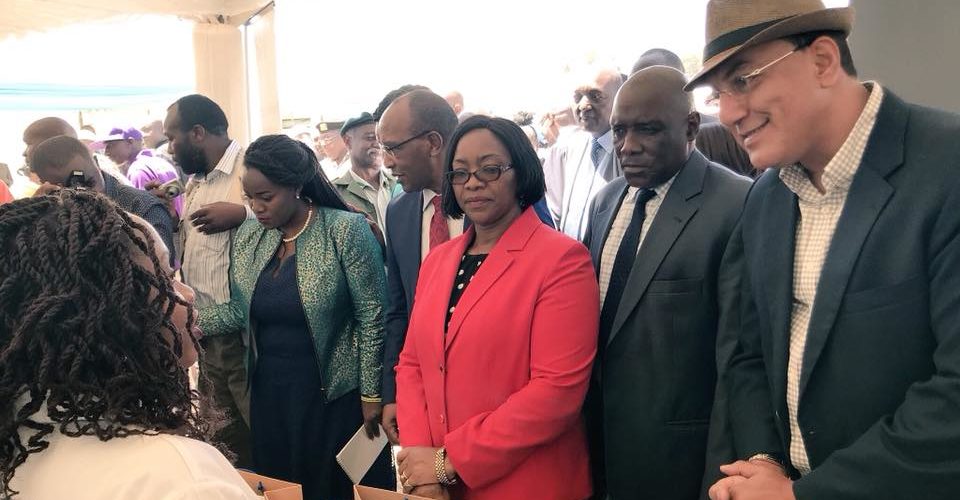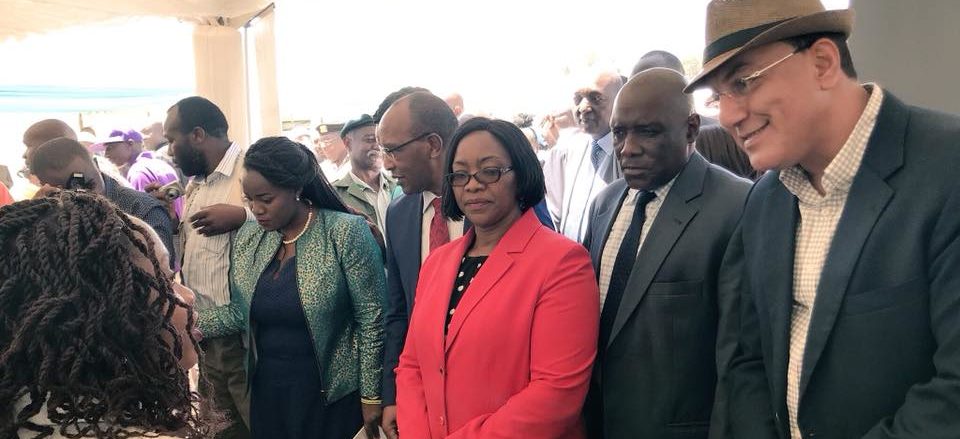It is the beautiful sight of the Egyptian and yellow-billed geese flocks swimming gracefully in the brackish water along the shores that welcomes you to the lake. A few meters away, we notice a hippopotamus emerging on the surface but it takes a quick dive on spotting us and swims away. If you love nature you will enjoy the cold breeze of fresh air on your face and the wind blowing through your hair. Welcome to Lake Ol-Bolossat in Nyandarua County.
Lying 7,600 feet above sea level, and below the spectacular Aberdare mountain ranges, Lake Olbolossat is the only freshwater lake in central Kenya. It supplies water to Thomson Falls in Nyahururu and the Ewaso Ngiro River, supporting a large population of people, livestock and wildlife downstream. It is also an Important Bird Area that attracts tourists and researchers who come from as far as Europe and Asia. Despite its beauty and economic benefits, the lake is threatened by unprecedented environmental degradation, silting, pollution and encroachment.

However, this is bound to change as the Government of Kenya has gazetted Lake Ol’Bolossat as a wetland protected area. The declaration was made by the outgoing Environment and Natural Resources Cabinet Secretary, Prof. Judi Wakhungu, during the World Wetlands Day celebration, in Nyandarua County. This annual event, which is usually celebrated on February 2, brings together governments, non-governmental organizations, conservation groups, among others to champion the conservation, rehabilitation and protection of wetlands around the world.Wetlands International celebrated this milestone, a result of immense efforts the organization has put, alongside other institutions, to ensure the lake is conserved, rehabilitated and protected from activities that have threatened its future existence.
Lake Ol ‘Bolossat is one of the wetlands where Wetlands International is working. The lake forms the headwaters of the important Ewaso Ng’iro river, where we have been implementing community resilience and ecosystem restoration programs since 2010. The Program (Partners for Resilience) is a strategic partnership implemented by among others Kenya Redcross and IMPACT who supported this year’s World Wetlands Day celebrations.

Speaking at the event, the Cabinet Secretary Tourism, Hon. Najib Balala, who was the chief guest, lauded the ongoing conservation efforts to restore and safeguard the lake. “I have singled out the rare birds’ species which have the potential of making the lake “an important tourist attraction in the region”, he said. On the other hand, the chairman of the National Land Commission, Prof Mohammed Swazuri, issued a public notice invalidating all the titles held by individuals within a thirty-meter radius of Lake Ol ‘Bolossat, pursuant to Section 152A, 152B and 152C of the National Land Act. Residents were, therefore, given 90 days to vacate the gazetted area.
As part of the World Wetlands Day festival, Wetlands International held a community forum at Kasuku Market on January 31 to sensitize and create awareness on the importance of the lake to the community, its value, the challenges it faces and the way forward in conserving and ensuring a future for the lake. This forum brought together more than 400 participants; the residents, environmental experts, lobbies and governments drawn from various institutions such as National Land Commission, Kenya Wildlife Service, NEMA, Birders, academia and others among others, to engage and deliberate on community-based responses to the sustainable management of this important resource.

Stephen Katua, Deputy Director Coastal, Marine & Freshwater NEMA, retaliates that, the efforts to ensure sound management of this important wetland which has finally been gazetted have been going for the past few decades, thanks to collaboration among various stakeholders including government agencies led by NEMA, Kenya Wildlife Service and conservation NGOs such as Nature Kenya and Wetlands International.
According to Julie Mulonga Head of Kenya office, Wetlands International ” the ultimate goal is to ensure Lake Ol ‘Bollosat is restored and well managed and this entails participatory development of a management plan, which clearly identifies threats (human-induced and natural processes) and opportunities. This will entail the collection of data that can help in understanding the lake better; the wetland has several connections including the Ewaso Ng’iro River and the Thompson Falls – it would also be important to understand the connections and bring all stakeholders including the county government and communities on board; working with them can go to long way in restoring its glory, she said.
Widely referred to as the “kidneys of the landscape”, Wetlands are, indeed, critical in the functioning of the global hydrological cycle. They play a regulatory role in climate systems, water purification, and waste removal, re-charge of groundwater and provide a suitable habitat for many aquatic plants and animals. However, concerns have been raised over the current overload of wetlands in Kenya, threatening our water security. This is the reason why our organization and other line agencies have been working to promote sustainable approaches to the utilization of this critical resource. This year’s event highlighted the important role wetlands play in sustainable urbanization. Urban lakes make cities habitable in various ways – they control flooding, replenish drinking water, filter waste, provide urban green spaces along their shores, and are a source of livelihoods. The importance of integrating urban lakes into cities sustainable future planning and development was emphasized.
– ENDS –

